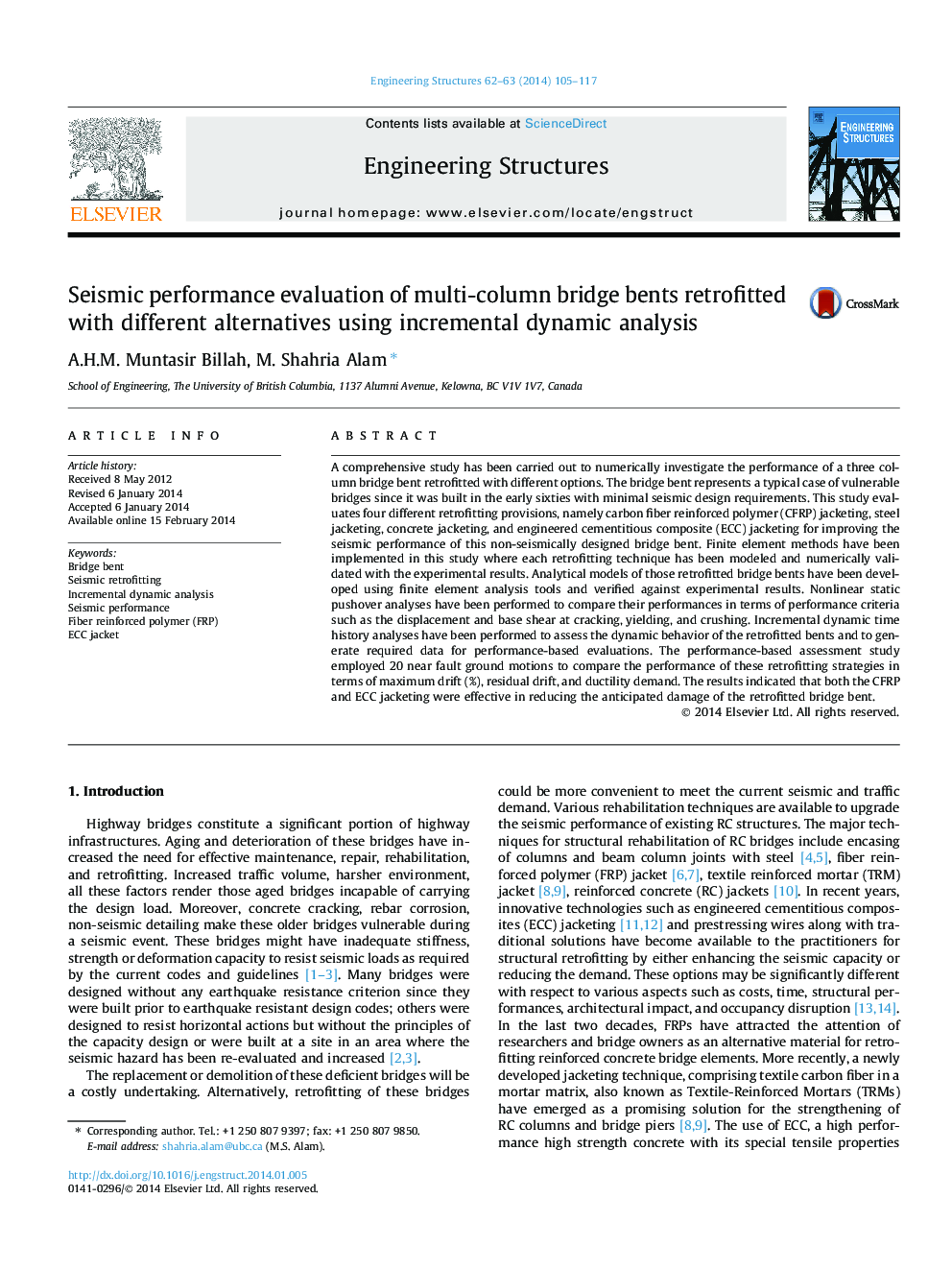| Article ID | Journal | Published Year | Pages | File Type |
|---|---|---|---|---|
| 266798 | Engineering Structures | 2014 | 13 Pages |
•Seismic performance evaluation of a non-seismically designed multi-column bridge bent.•Comparative performance evaluation of different retrofitting techniques.•Validation of analytical model with experimental results.•Performance-based evaluation using 20 near-fault ground motion.•CFRP and ECC jacket can provide acceptable performance under high intensity ground motions.
A comprehensive study has been carried out to numerically investigate the performance of a three column bridge bent retrofitted with different options. The bridge bent represents a typical case of vulnerable bridges since it was built in the early sixties with minimal seismic design requirements. This study evaluates four different retrofitting provisions, namely carbon fiber reinforced polymer (CFRP) jacketing, steel jacketing, concrete jacketing, and engineered cementitious composite (ECC) jacketing for improving the seismic performance of this non-seismically designed bridge bent. Finite element methods have been implemented in this study where each retrofitting technique has been modeled and numerically validated with the experimental results. Analytical models of those retrofitted bridge bents have been developed using finite element analysis tools and verified against experimental results. Nonlinear static pushover analyses have been performed to compare their performances in terms of performance criteria such as the displacement and base shear at cracking, yielding, and crushing. Incremental dynamic time history analyses have been performed to assess the dynamic behavior of the retrofitted bents and to generate required data for performance-based evaluations. The performance-based assessment study employed 20 near fault ground motions to compare the performance of these retrofitting strategies in terms of maximum drift (%), residual drift, and ductility demand. The results indicated that both the CFRP and ECC jacketing were effective in reducing the anticipated damage of the retrofitted bridge bent.
